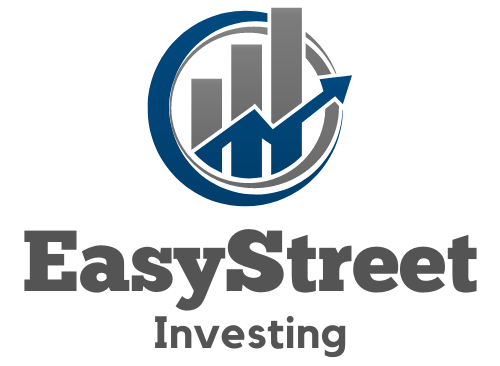In the fast-paced world of finance, savvy investors are constantly on the hunt for high-yield investments that promise robust returns. Predicting which trends will dominate this sphere is crucial for staying ahead of the curve. In this article, we’ll dive into the art and science of forecasting high-yield investment trends, offering insights that could help you make informed decisions. From analyzing market indicators to understanding investor sentiment, we’re unpacking the strategies that might just give you an edge in navigating these lucrative waters.
Now, let’s get real – everyone wants a slice of that high-return pie. But how do you spot the next big opportunity? We’ll explore emerging sectors, dissect economic signals, and consider geopolitical shifts that can sway high-yield prospects. Whether you’re a seasoned pro or a curious newbie, this piece is packed with actionable tips to help decode the complex world of high-yield investing. Sit tight as we reveal the tools and tricks that could unlock potential windfalls in your investment portfolio.
Important Highlights
1. Identifying macroeconomic indicators is essential for investors interested in high-yield investing, as such indicators can signal shifts in market conditions that affect bond prices and default rates. By closely monitoring economic trends, such as GDP growth, unemployment rates, and inflation, investors can anticipate changes in the creditworthiness of high-yield bond issuers.
2. Technological advancements have revolutionized the way we predict trends in high-yield investing. Machine learning algorithms and big data analytics provide insights into market patterns and investor behaviors that were previously difficult to discern. Utilizing these tools enhances an investor’s ability to forecast market movements with greater accuracy.
3. Diversification across sectors and geographies is a strategic approach to mitigate risks associated with high-yield investing. Investors should spread their investments among various industries and regions to avoid overexposure to a single economic event or downturn, thus protecting their portfolio from significant losses.
4. The role of credit ratings agencies, such as Moody’s and Standard & Poor’s, remains pivotal in assessing the risk profile of high-yield investments. A thorough understanding of rating methodologies enables investors to better gauge the default risk tied to particular bonds or loan instruments.
5. Monitoring liquidity levels within the high-yield market is crucial, as reduced liquidity can lead to larger price swings and difficulty exiting positions. Investors must be aware of current market dynamics, including trading volumes and bid-ask spreads, to effectively manage their portfolio’s liquidity risk.
Understanding High-Yield Investment Trends
Analyzing the current market landscape is crucial for investors to identify high-yield opportunities. Keep an eye on economic indicators such as inflation rates, interest rate movements, and gross domestic product (GDP) growth. These factors can influence the performance of high-yield investments. Additionally, sector-specific trends such as technological advancements or regulatory changes can also impact yields.
Role of Economic Cycles in High-Yield Investments
Economic cycles play a significant role in shaping high-yield investment trends. During periods of economic expansion, risk appetite generally increases, driving demand for higher-yielding assets. Conversely, during downturns, investors may seek the safety of lower-risk investments, affecting the availability and attractiveness of high-yield options.
Data-Driven Investment Strategies
Leverage quantitative analysis and advanced data analytics to forecast high-yield investment performance. Utilizing tools like regression analysis and machine learning algorithms can reveal patterns that help predict future trends. Platforms such as Bloomberg Terminal provide extensive financial data that can be instrumental in making informed decisions.
Incorporating Alternative Data Sources
Explore alternative data sources like social media sentiment, geopolitical events, or even weather patterns to gain a competitive edge in predicting high-yield investment trends. These unconventional data points can sometimes offer early signals about shifts in market dynamics.
Impact of Monetary Policy on High-Yield Securities
Monitor central bank policies closely, as adjustments to interest rates and quantitative easing programs directly affect the yield environment. A tightening monetary policy may lead to reduced liquidity for high-yield investments, while an accommodative stance could boost their appeal.
Fed Watch and Investor Behavior
The Federal Reserve’s decisions are particularly influential in the United States. Investors often practice ‘Fed watching’ to anticipate changes that might impact their high-yield portfolios. By reading between the lines of Fed communications, one can gauge potential market movements.
Diversification Strategies in High-Yield Portfolios
Diversifying across various sectors and geographies can mitigate risk while still targeting high yields. Consider mixing corporate bonds with different credit ratings, dividend-paying stocks from multiple industries, and even adding some emerging market debt for balance.
Balancing Risk and Reward
Finding the right balance between risk and reward is essential when aiming for higher yields. Evaluate each investment’s return potential against its default risk or price volatility to construct a resilient portfolio capable of weathering market fluctuations.
Technological Advancements in High-Yield Investing
New technologies such as blockchain and AI are revolutionizing how we analyze and select high-yield investments. Embrace these innovations to streamline research processes and uncover unique investment opportunities with promising returns.
Leveraging Fintech Solutions
Fintech platforms offer access to real-time data and algorithmic trading which can enhance decision-making efficiency in seeking out high-yield investments. Tools like Robinhood have democratized access to financial markets, allowing more investors to participate in high-yield investing.
Environmental, Social, and Governance (ESG) Considerations
Incorporate ESG criteria into your analysis process; companies with strong sustainability practices may present less risk and potentially higher long-term yields due to their forward-thinking approach.
Tax Implications of High-Yield Investments
Navigate tax considerations carefully; certain high-yield investments may come with favorable tax treatment which can enhance after-tax returns for investors who plan strategically.
—
- Analyze macroeconomic indicators regularly for signs of trend shifts in high-yield markets?
- How do you effectively diversify a high-yield investment portfolio?
- What role does technology play in identifying lucrative high-yield opportunities?
- In what ways can ESG factors influence the success of high-yield investments?
- Why should you consider tax implications when selecting high-yield investment options?
Frequently Asked Questions
How can I start with high-yield investments?
To begin high-yield investing, educate yourself about the options available, such as high-yield bonds or dividend stocks. Assess your risk tolerance and consult a financial advisor to help you choose suitable investments that align with your financial goals.
What indicators suggest a promising high-yield investment?
Look for investments with strong fundamentals, including solid earnings growth, credible management teams, and stable cash flows. Be mindful of the creditworthiness of bond issuers and the sustainability of dividend payouts when evaluating opportunities.
Can market trends impact my high-yield portfolio?
Definitely. Market trends can significantly affect high-yield investments. Stay informed on economic indicators, interest rate movements, and industry developments to anticipate changes that may impact your returns.
Is timing crucial in high-yield investing?
While timing isn’t everything, entering or exiting an investment at the right moment can enhance returns. Monitor market cycles and consider consulting financial reports and trend analyses to make informed decisions.
What’s the role of diversification in managing risks?
Diversification is key in mitigating risks. Spread your capital across various sectors and asset types to reduce potential losses from any single investment underperforming.
How important are interest rates to high-yield investments?
Interest rates are very important because they can affect the value of high-yield bonds. Rising rates often lead to falling bond prices. It’s essential to understand the interest rate environment when managing a high-yield portfolio.
Can economic downturns benefit high-yield investors?
In some cases, yes. Economic downturns may create opportunities for investors to acquire high-yield assets at lower prices, potentially leading to higher returns if the markets recover.
Should I follow expert predictions on high-yield trends?
Following expert predictions can be useful but should not be the sole basis for investment decisions. Balance expert insights with personal research and professional advice tailored to your financial situation.
Are there tools to help predict future performance of high-yield investments?
Certainly! Utilize financial analysis tools, trend forecasting software, and market sentiment indicators to aid in predicting future performance. However, remember no tool guarantees absolute accuracy.
How frequently should I review my high-yield investment strategy?
You should regularly review your strategy – at least quarterly or semi-annually – to ensure it remains aligned with market conditions and personal investment goals.
Closing Insights on High-Yield Trend Forecasting
Navigating the world of high-yield investing requires a balance between keen market observation and strategic planning. While it’s tempting to seek out definitive answers in trend predictions, we must remember that investing is not an exact science; it’s an art that combines data analysis with intuition built over time. Staying agile and continuously educating oneself about market dynamics play a pivotal role in making sound investment choices.
In conclusion, predicting trends in high-yield investing is about understanding patterns without becoming overly reliant on them. Diversify wisely, remain vigilant for shifts in economic landscapes, and maintain a long-term perspective to ride through volatility towards achieving substantial gains. The future might not be certain, but thorough preparation can help investors weather storms and capitalize on sunny days alike.

